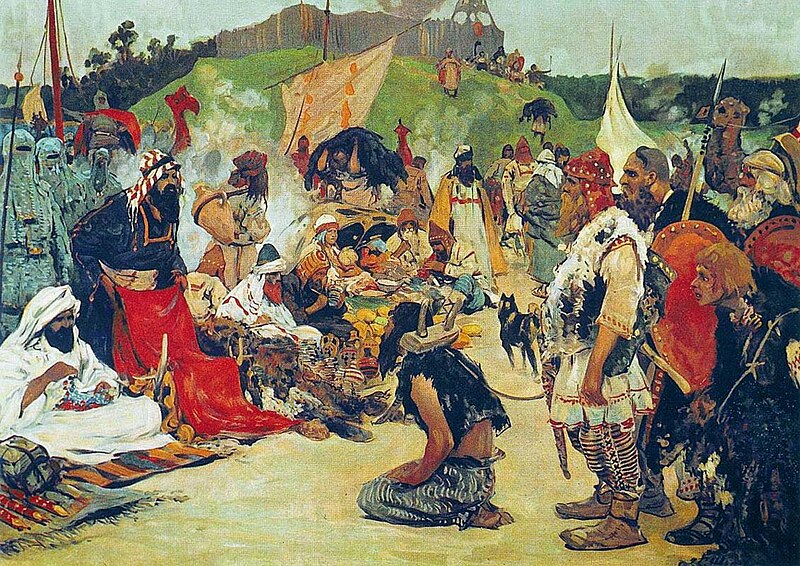Hello ladies and gents this is the Viking telling you that today we are talking about
VOLGA TRADING
In the Middle Ages, the Volga trade route connected Northern Europe and Northwestern Russia with the Caspian Sea and the Sasanian Empire, via the Volga River. The Rus used this route to trade with Muslim countries on the southern shores of the Caspian Sea, sometimes penetrating as far as Baghdad.
The powerful Volga Bulgars (cousins of today's Balkan Bulgarians) formed a seminomadic confederation and traded through the Volga river with Viking people of Rus' and Scandinavia (Swedes, Danes, Norwegians) and with the southern Byzantine Empire (Eastern Roman Empire) Furthermore, Volga Bulgaria, with its two cities Bulgar and Suvar east of what is today Moscow, traded with Russians and the fur-selling Ugrians. Chess was introduced to Old Russia via the Caspian-Volga trade routes from Persia and Arabic lands.
The route functioned concurrently with the Dnieper trade route, better known as the trade route from the Varangians to the Greeks, and lost its importance in the 11th century.
The Volga trade route was established by the Varangians who settled in Northwestern Russia in the early 9th century. About 10 km (6 mi) south of the Volkhov River entry into Lake Ladoga, they established a settlement called Ladoga (Old Norse: Aldeigjuborg).
Archaeological evidence suggests Rus trading activities along the Volga trade route as early as the end of the 8th century. The earliest and the richest finds of Arabic coins in Europe were discovered on the territory of present-day Russia, particularly along the Volga, at Timerevo in the district of Yaroslavl. A hoard of coins found at Petergof, near Saint Petersburg, contains twenty coins with graffiti in Arabic, Turkic (probably Khazar) runic, Greek, and Old Norse runic, the latter accounting for more than half of the total. These coins include Sassanid, Arab, and Arabo-Sassanid dirhams, the latest of them dated to 804–805.
Having examined major finds of Arabic coins in Eastern Europe, Valentin Yanin conclusively demonstrated that the earliest monetary system of early Russia was based on the early type of dirham minted in Africa. Furthermore, Iranian lusterware was already discovered in the Oka and Upper Volga regions (more precisely, it is spread in Rostov, Yaroslavl, Suzdal, Tver, Moscow and Ryazan).
and as always have a chilled day from the Viking

Comments
Post a Comment